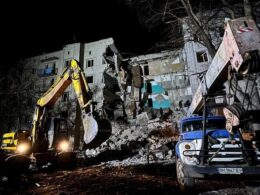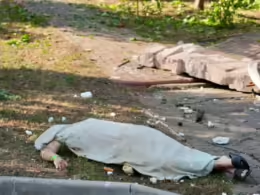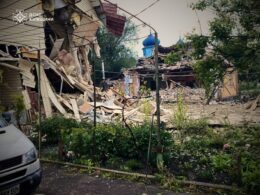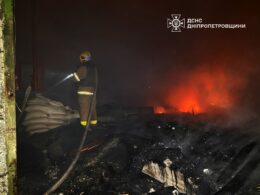In the summer of 2024, a Russian reconnaissance drone flew unhindered to the Myrhorod airbase in Poltava Oblast, guiding a Russian missile to strike Ukrainian combat aircraft. Months later, a similar incident occurred on 22 November, or the day before, near Dnipro, according to Forbes.
Russia uses reconnaissance drones ahead of missile strikes against Ukraine. These unmanned aerial vehicles serve a dual purpose: they gather vital intelligence on Ukrainian positions and facilitate accurate targeting for subsequent missile attacks. The integration of drones into combat operations allows for real-time surveillance, enabling Russian forces to assess the effectiveness of their strikes and adjust tactics accordingly.
In the recent incident, a Russian reconnaissance drone reportedly flew over the Aviatorske-Dnipro airbase, about 95 km from the front line.
Forbes analyst David Axe said that according to a video shared by Russian propaganda, the drone targeted a shelter likely housing a Ukrainian MiG-29 fighter jet. Minutes later, an Iskander ballistic missile struck, exploding directly above the shelter and likely destroying the aircraft.
Since fall 2023, Russia has used this tactic to destroy at least two Su-27s, four MiG-29s, a Su-25, and possibly a Mi-24 helicopter.
"It's a startling rate of loss for a military that might have fewer than 100 operational warplanes and just 50 or so gunships," said the report.
Jack Watling, an analyst at the Royal United Services Institute in London, attributed the successful Iskander strikes to Russia's "continuous and dense surveillance" over Ukraine. He noted that Ukraine still lacks sufficient air defense systems to secure its airspace, even near military bases.
Western F-16s and Mirage 2000s, which Ukraine places high hopes on, could face a similar fate unless Ukraine significantly improves its air defenses.
On 1 July, Russia launched a missile strike on the Myrhorod airbase in Poltava Oblast, where several Ukrainian combat aircraft were stationed. Former Ukrainian Air Force spokesman Yurii Ihnat confirmed the attack, acknowledging losses but refuting the extent of damage claimed by Russia.
This strike caused public outrage when Ukraine's air defense could not take down a drone that flew over the airfield ahead of the assault.
Read also:





